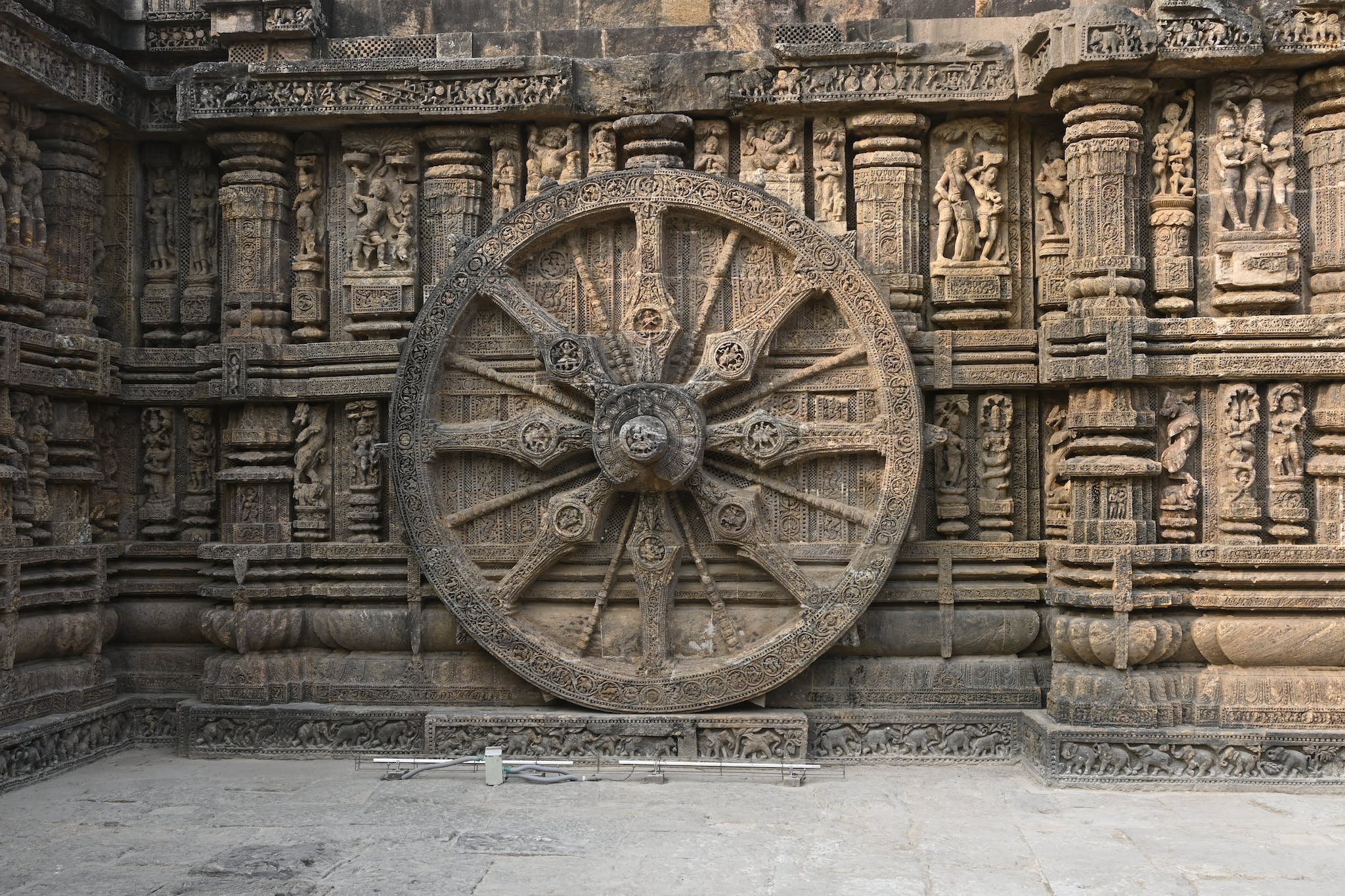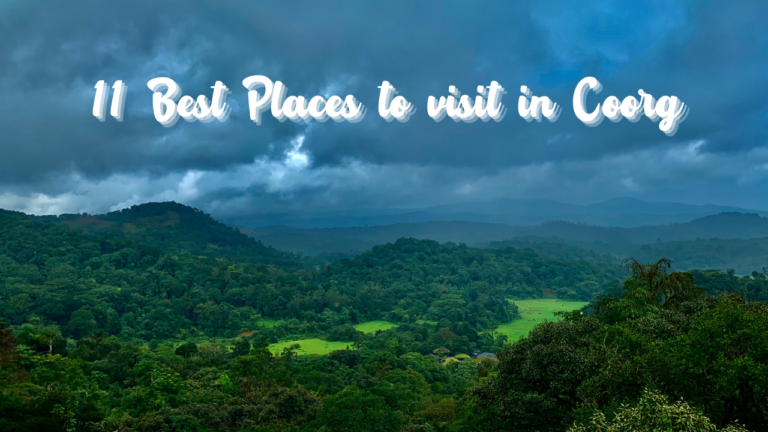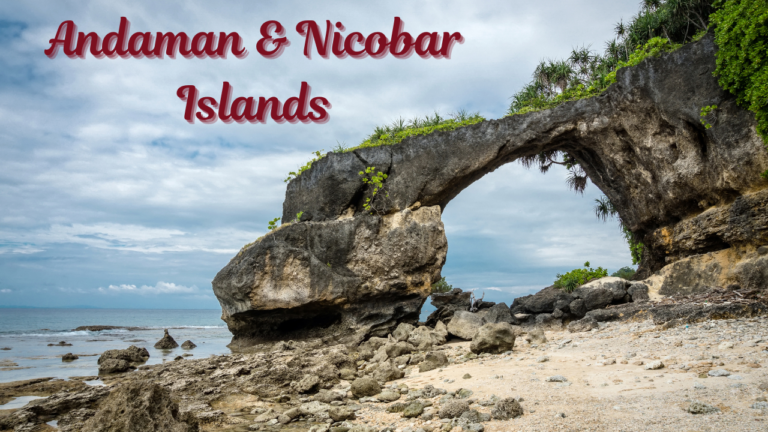Uncharted India: 15 Historical Odysseys to Ignite Your Explorer’s Spirit.

India, a vibrant tapestry woven from countless threads of culture, tradition, and time, beckons travellers with experiences beyond the ordinary. But for those yearning to truly immerse themselves in the soul of this ancient land, there’s a hidden treasure trove: the 15 historical places to visit in India. These architectural marvels, whispering tales of empires long gone and dynasties yet remembered, will transport you through epochs, captivated and enriched.
1. The Taj Mahal: Love’s Eternal Ode in Agra (Uttar Pradesh)
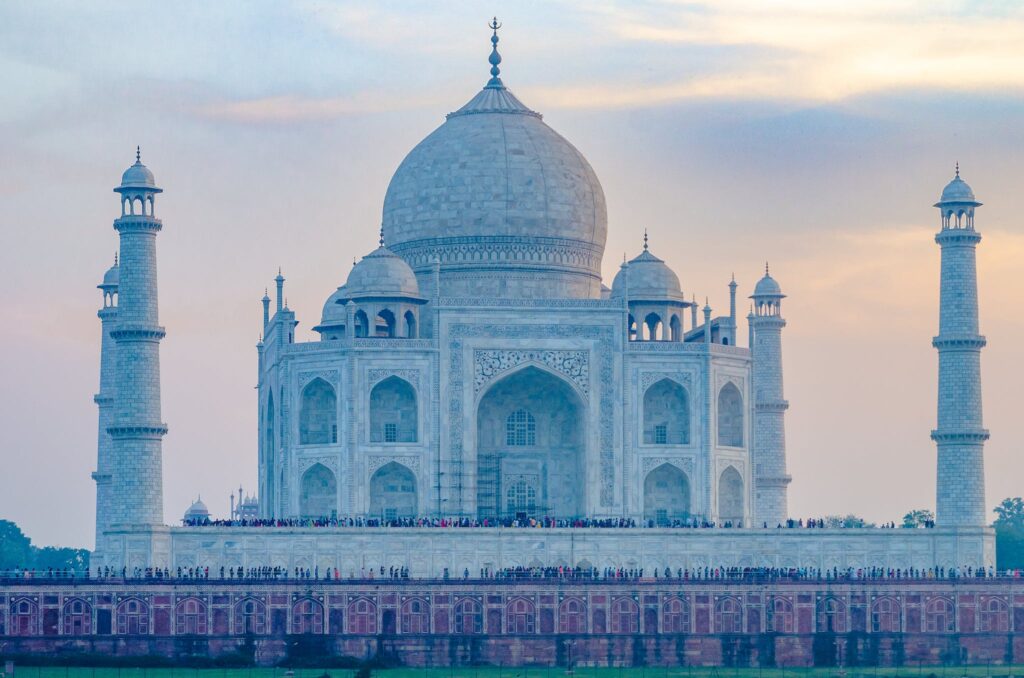
Every list of historical places to visit in India can only be complete with the Taj Mahal, an architectural marvel that transcends mere bricks and mortar. This ethereal white marble mausoleum, built by Mughal emperor Shah Jahan in memory of his beloved queen Mumtaz Mahal, is a poignant ode to love that transcends time. As you wander through its serene gardens and gaze upon its intricate details, the Taj whispers a love story etched in stone, a testament to the enduring power of human emotion.
2. The Red Fort: Delhi’s Regal Bastion of Power
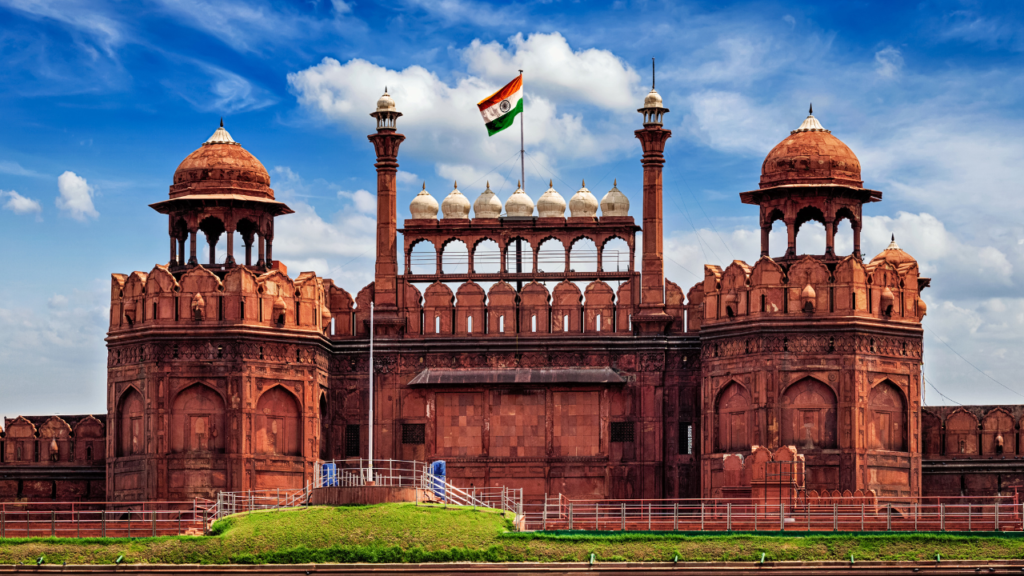
Standing tall amidst the bustling metropolis of Delhi, the Red Fort, a UNESCO World Heritage Site, embodies the city’s rich Mughal heritage. Built by Emperor Shah Jahan in the 17th century, this imposing red sandstone structure served as the seat of Mughal power for centuries. Explore its labyrinthine corridors, marvel at the Diwan-e-Aam (Hall of Public Audience) and Diwan-e-Khaas (Hall of Private Audience), and soak in the panoramic views from the ramparts. The Red Fort’s grandeur is a powerful reminder of India’s glorious past.
3. Khajuraho Temples: Erotic Tales Carved in Stone (Madhya Pradesh)
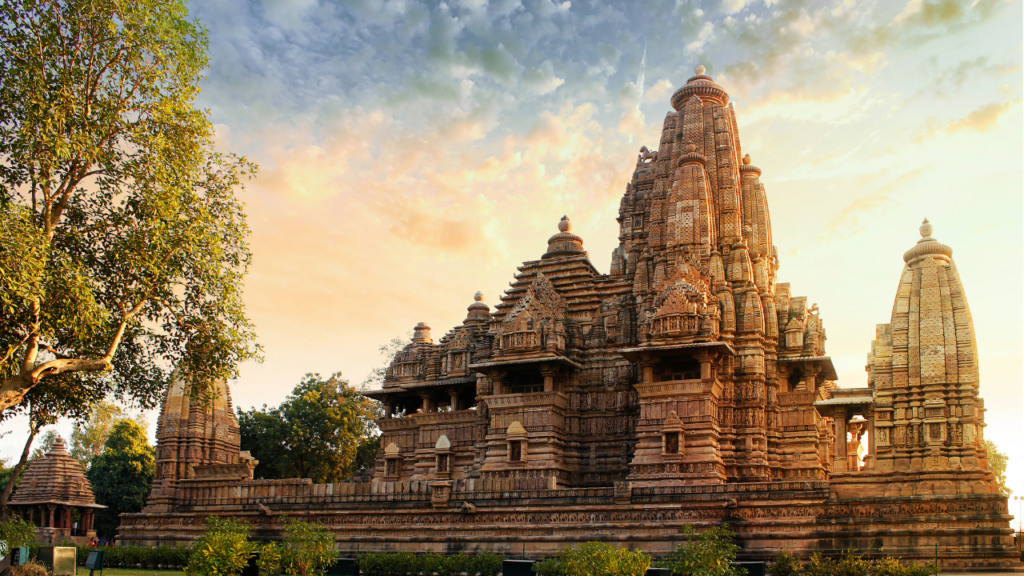
Nestled amidst the Bundelkhand region of Madhya Pradesh lie the Khajuraho Temples, a group of Hindu and Jain monuments renowned for their exquisite carvings and sculptures. Built between the 9th and 11th centuries, these temples display a remarkable blend of artistic expression and spiritual symbolism. While some might be surprised by the erotic imagery showcased on the temple walls, these carvings were meant to represent the cycle of life and liberation, serving as an invitation to consider the connection between the spiritual and material worlds.
4. Ajanta and Ellora Caves: Echoes of Faith in Rock-Cut Marvels (Maharashtra)
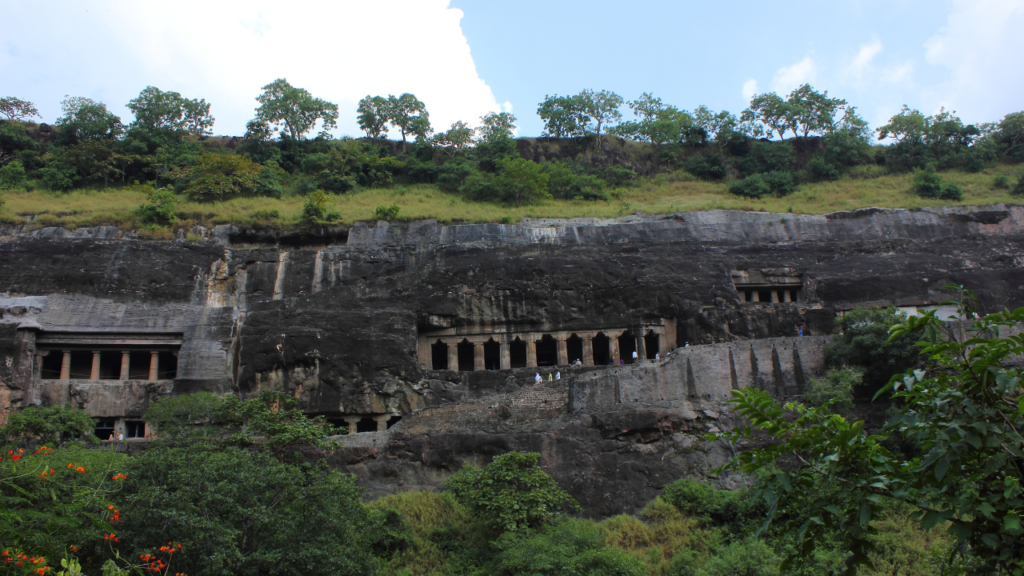
Carved into the volcanic cliffs of Maharashtra, the Ajanta and Ellora Caves are a UNESCO World Heritage Site and a testament to ancient India’s artistic and spiritual achievements. The Ajanta Caves, spanning the 2nd century BCE to the 6th century CE, showcase stunning Buddhist murals depicting stories from the Jataka tales and the life of Buddha. In contrast, the Ellora Caves, dating from the 5th to the 10th centuries, present a magnificent blend of Buddhist, Hindu, and Jain cave temples, each meticulously carved and adorned with intricate details. This site is a true pilgrimage for art and history enthusiasts.
5. Hampi: Ruins Whispering of a Forgotten Empire (Karnataka)
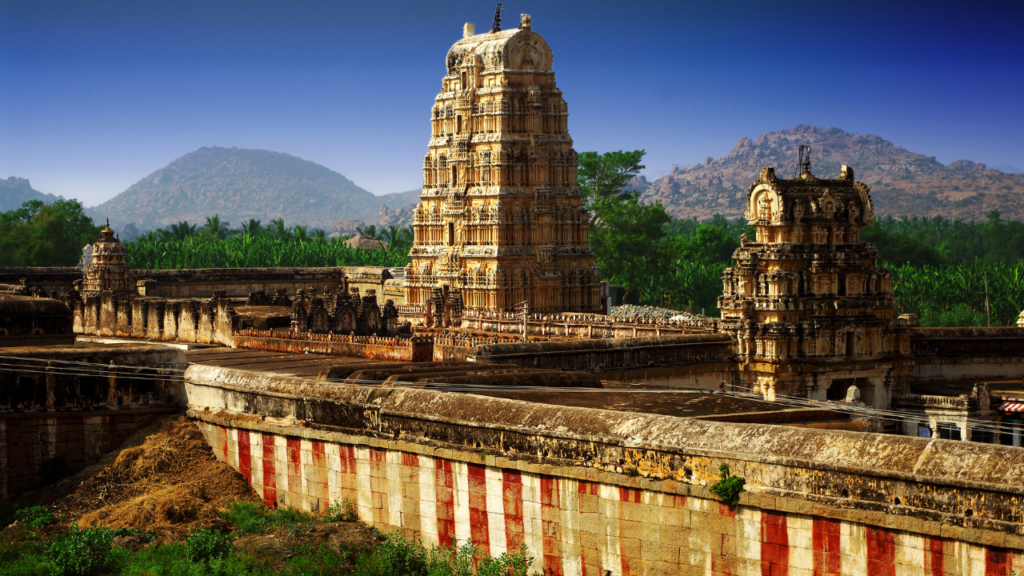
Once the wealthy capital of the Vijayanagara Empire, Hampi is now a UNESCO World Heritage Site, its vast ruins showcasing the grandeur of a bygone era. Step into the courtyards of the Royal Enclosure, marvel at the intricately carved Stone Chariot and lose yourself in the maze of temples and pavilions. Though weathered by time, Hampi’s remnants whisper tales of power, prosperity, and artistic brilliance, transporting you to a golden age of Indian history.
6. Meenakshi Amman Temple: Madurai’s Dravidian Symphony (Tamil Nadu)
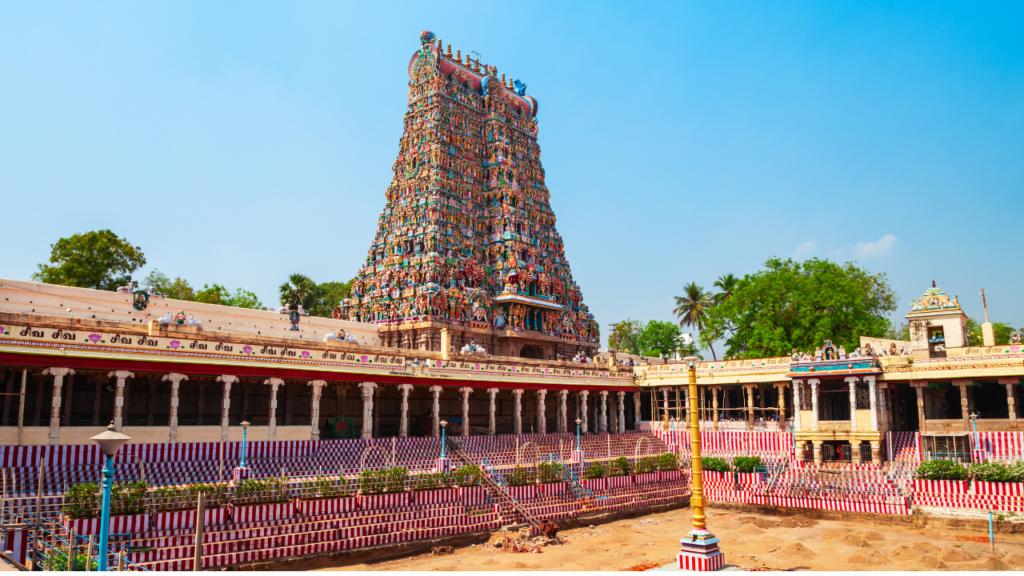
Step into Madurai and prepare to be dazzled by the kaleidoscope of colours and intricate carvings of the Meenakshi Amman Temple. This colossal Dravidian marvel, dedicated to the Hindu goddess Parvati and Lord Shiva, is a symphony of architecture, sculpture, and vibrant life. As you walk through the Hall of a Thousand Pillars, each adorned with unique sculptures, or gaze upon the 14 gopurams (gateway towers) adorned with thousands of painted figures, you’ll be transported to a world of vibrant devotion and artistic mastery.
7. Mysore Palace: Echoes of Royalty in the City of Palaces (Karnataka)
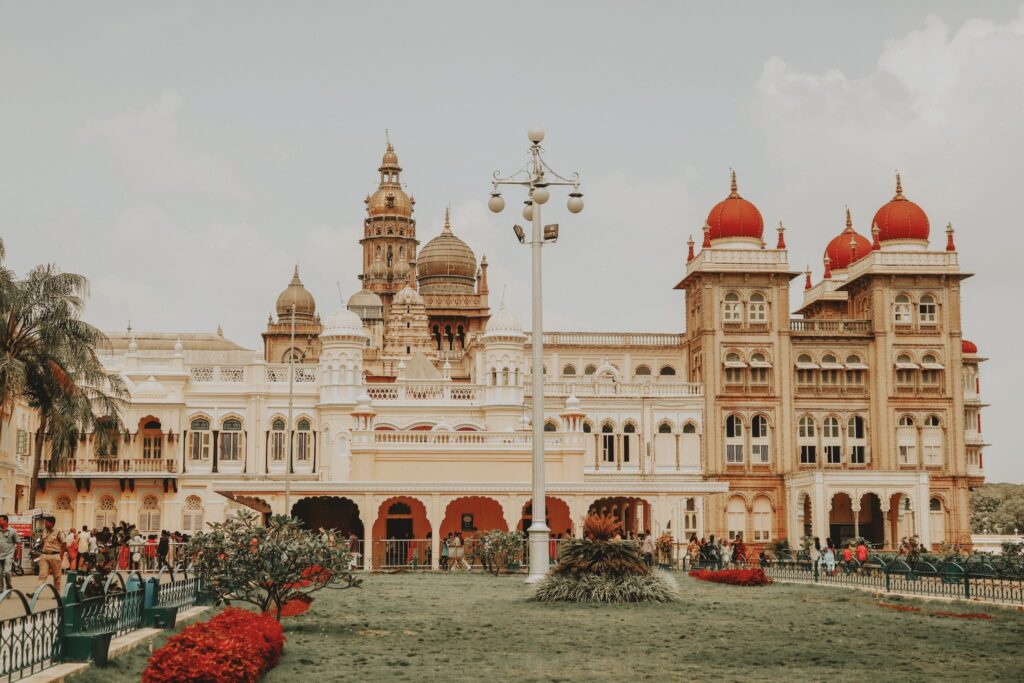
Shimmering under the golden Karnataka sun, the Mysore Palace, a UNESCO World Heritage Site, is a testament to the opulence and grandeur of the Wodeyar dynasty. This architectural masterpiece blends Hindu, Islamic, and Gothic styles, its intricately carved arches, gold-leafed domes, and stained-glass windows reflecting the rich tapestry of India’s cultural heritage. Explore the Durbar Hall, where royal ceremonies once unfolded, or wander through the sprawling gardens and let the palace whisper tales of a bygone era.
8. Qutub Minar: Delhi’s Soaring Legacy of Conquest (Delhi)
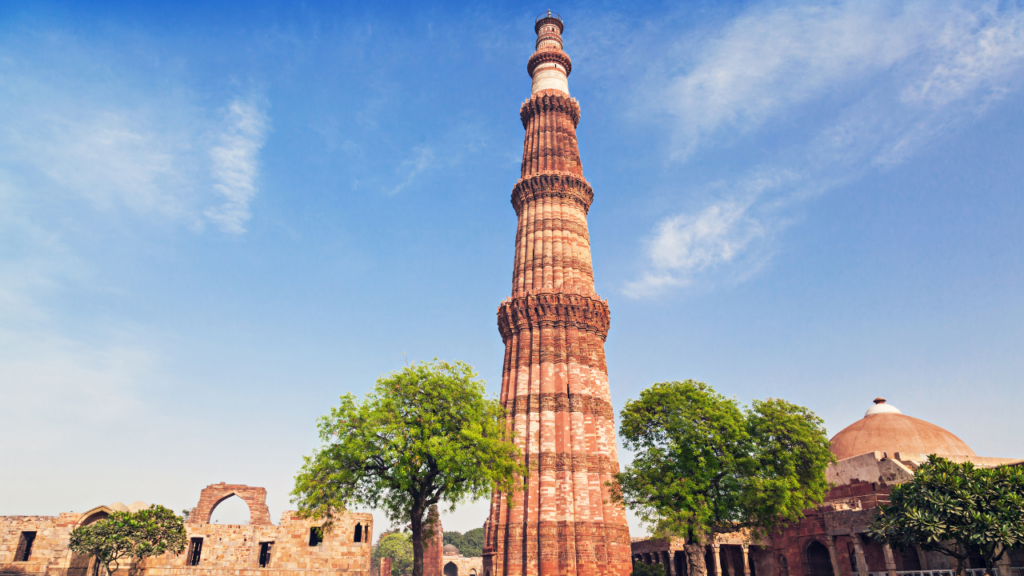
Reaching skyward in Delhi, the Qutub Minar, a UNESCO World Heritage Site, is a mesmerizing blend of power and architectural prowess. Builtin the 12th century by Qutb-ud-din Aibak to mark the beginning of Muslim rule in India, this towering fluted minaret is adorned with verses from the Quran and intricate carvings. As you climb its 379 steps, each echoing the whispers of history, you’ll be rewarded with breathtaking panoramic city views.
9. Jaisalmer Fort: The Golden Bastion of the Thar Desert (Rajasthan)
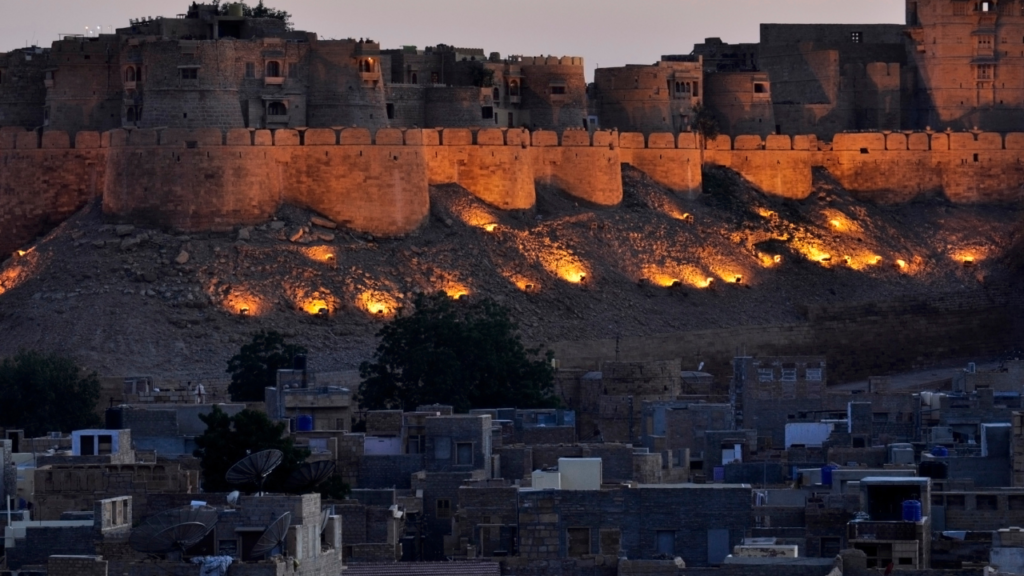
Rising like a mirage from the golden sands of the Thar Desert, the Jaisalmer Fort, a UNESCO World Heritage Site, is a beacon of Rajput resilience and architectural wonder. Nicknamed the “Golden City” for its honey-coloured sandstone walls, this imposing fort has weathered centuries of invasions and stands as a testament to the indomitable spirit of the Rajputs. Explore its labyrinthine alleyways, climb the ramparts for stunning desert vistas, and lose yourself in the tales of bravery and chivalry within its walls.
10. Harmandir Sahib (Golden Temple): Amritsar’s Beacon of Faith (Punjab)
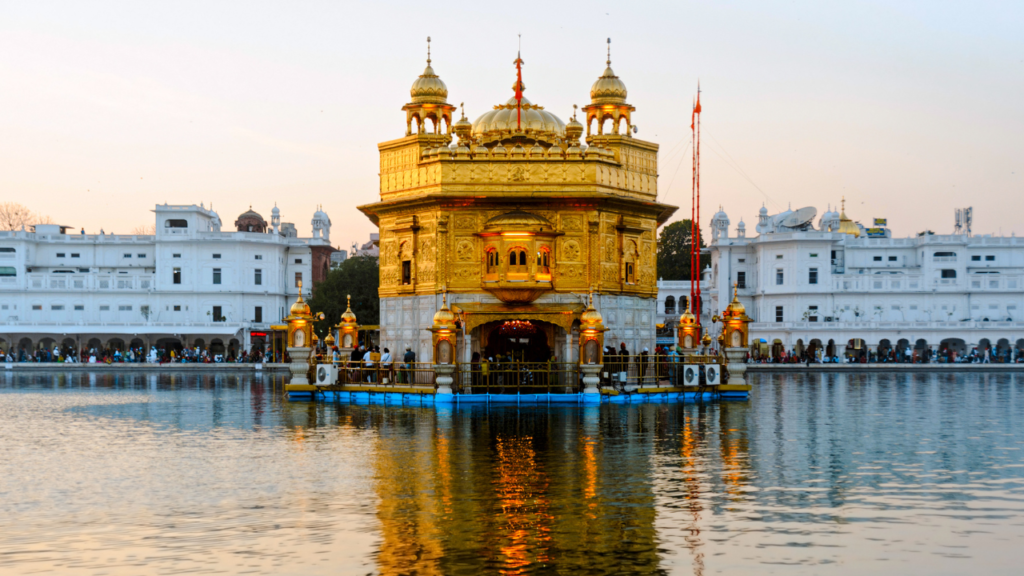
Awash in the golden glow of the setting sun, the Harmandir Sahib, also known as the Golden Temple, is the holiest shrine for Sikhs worldwide. This majestic complex, adorned with gold leaf and nestled amidst a serene lake, exudes an atmosphere of profound peace and spirituality. Immerse yourself in the rhythmic chanting of hymns, volunteer in the communal kitchen, and witness the daily changing of the guard ceremony. Each aspect of the Golden Temple experience is a testament to the power of faith and community.
11. Konark Sun Temple: Odisha’s Hymn to the Celestial Charioteer
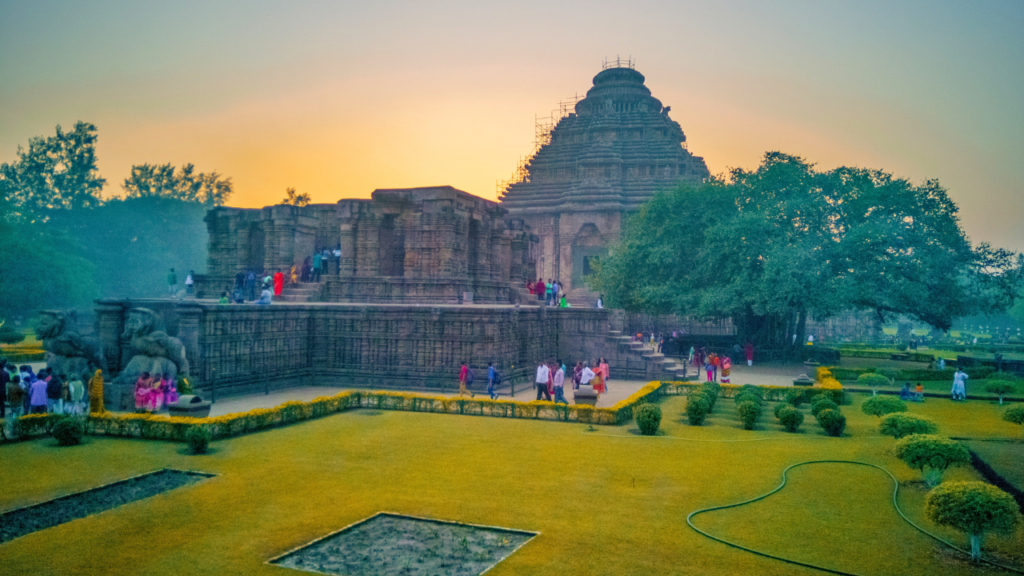
Bathed in the golden hues of dawn, the Konark Sun Temple in Odisha is a magnificent ode to the sun god Surya. Built in the 13th century by the Eastern Ganga dynasty, this UNESCO World Heritage Site is an architectural marvel. Witness the colossal chariot-shaped temple adorned with intricate carvings depicting celestial musicians, mythical creatures, and scenes from everyday life. As the sun’s rays dance across the sculpted figures, Konark comes alive, transporting you to an era of devotion and astronomical wisdom.
12. Mahabodhi Temple: Bodh Gaya’s Cradle of Enlightenment
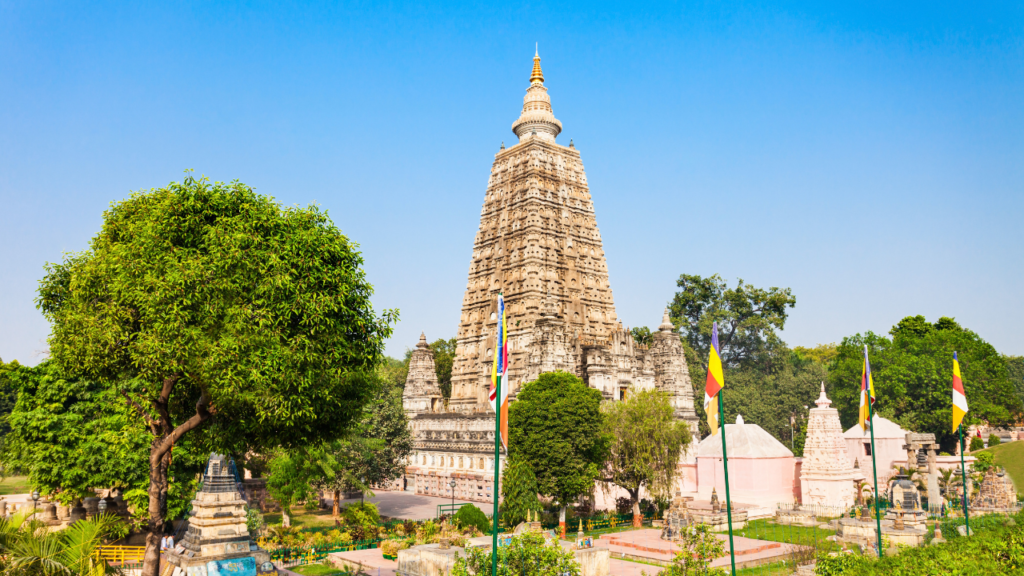
Tucked away in Bodh Gaya, Bihar, the Mahabodhi Temple is a sacred pilgrimage for Buddhists worldwide. This UNESCO World Heritage Site is where Prince Siddhartha Gautama attained enlightenment and transformed into the Buddha. Stroll through the serene temple complex, marvel at the towering Mahabodhi Stupa adorned with intricate reliefs, and soak in the palpable spiritual energy that permeates the atmosphere. Whether you’re a devout Buddhist or seeking inner peace, Mahabodhi offers a profound pilgrimage to the soul.
13. Rani ki Vav: Gujarat’s Descending Stairway to Glory
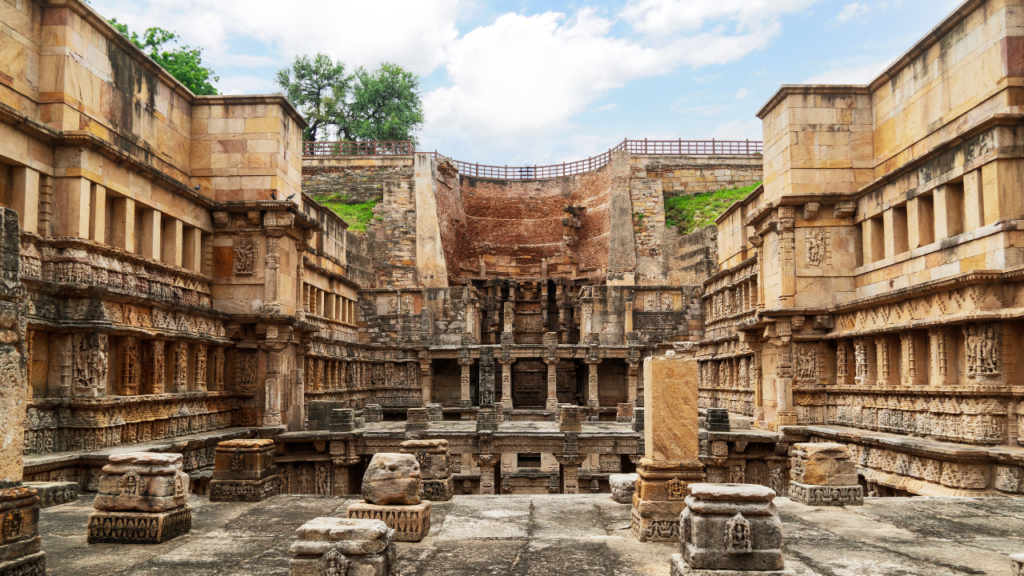
Step into Patan, Gujarat, and prepare to be mesmerized by the architectural wonder of Rani ki Vav, a UNESCO World Heritage Site. This intricately carved stepwell, built by Queen Udayamati in the 11th century, descends gracefully towards an underground reservoir. You’ll be transported to a bygone era of artistic finesse and engineering marvel as you navigate the seven levels adorned with sculptures of deities, mythical creatures, and scenes from everyday life. Rani ki Vav is a testament to architectural brilliance and the profound respect for water that has sustained Indian civilization for centuries.
14. Victoria Memorial: Kolkata’s Ode to a Bygone Era
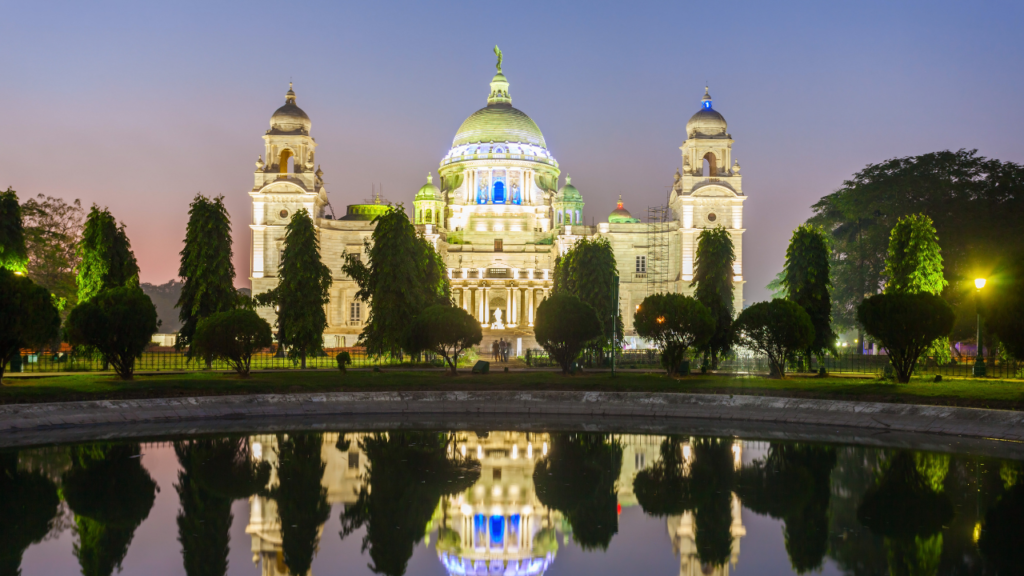
Standing gracefully amidst the bustling metropolis of Kolkata, the Victoria Memorial is a beacon of colonial India’s architectural legacy. Built-in the early 20th century to commemorate Queen Victoria, this grand marble structure showcases an Indo-Saracenic style, blending Mughal and Venetian architectural elements. Explore the museum within, housing artifacts and paintings that narrate the story of British India. Stroll through the landscaped gardens, and let the Victoria Memorial transport you to a time of luxury and empire.
15. Gwalior Fort: Madhya Pradesh’s Bastion of Empires
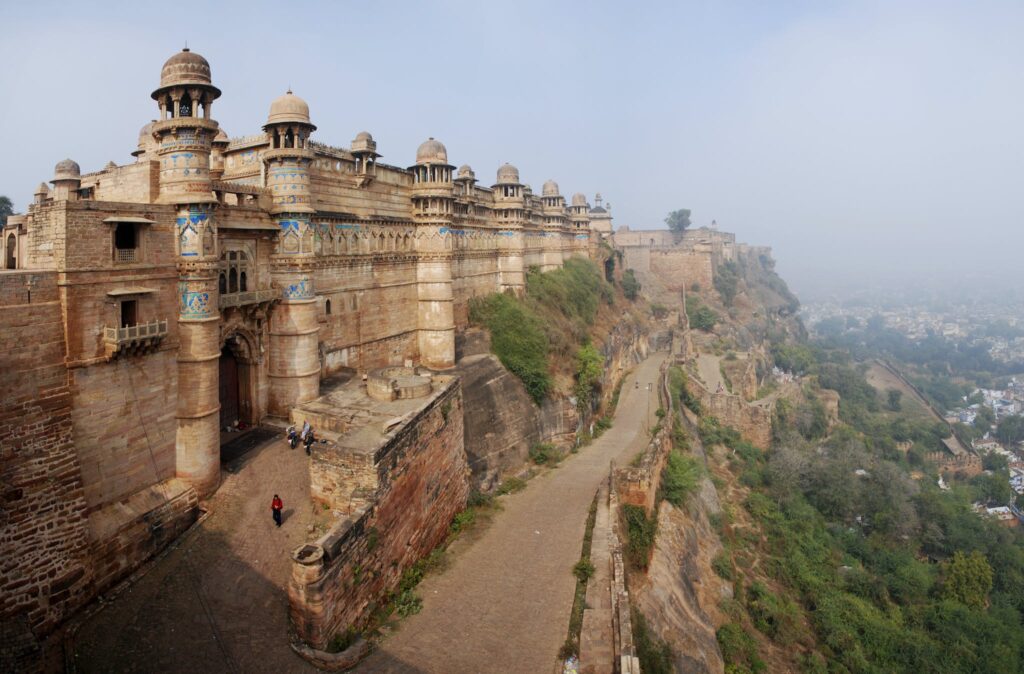
Perched atop a 300-foot sandstone hill in Madhya Pradesh, the Gwalior Fort blends history and legend. Witnessing the rise and fall of dynasties for over 1,000 years, this UNESCO World Heritage Site boasts a mesmerizing tapestry of architectural styles. Explore the Jahaz Mahal, a palace resembling a ship afloat in a lake, or climb the Man Mandir, offering breathtaking panoramic views. Each turn within the Gwalior Fort whispers tales of battles fought, alliances forged, and empires that shaped Indian history.
Conclusion:15 historical places to visit in India.
These 15 historical places to visit in India are just a glimpse into the countless treasures scattered across this vibrant land. Each site promises a unique encounter with India’s rich tapestry of cultures, traditions, and stories waiting to be unearthed. So, pack your bags, let the whispers of the past guide you, and embark on your historical adventure through India!
Support us by Sharing & read more on xplortheglobe.

